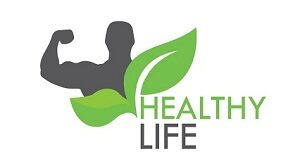The most known euphemism in the fitness world is active rest. You could be tempted to skip active rest in favour of another power workout, whether you’re trying to lose weight or simply enjoy your daily routine. However, the more intense your workout, the more active rest you’ll require. Your body needs time to repair and adapt, which it won’t be able to accomplish if you’re shredding your muscles like there’s no tomorrow, every day.
Take a break from your normal training on an active rest day to allow your body to rest. That doesn’t mean you have to do nothing more than sit on the couch. It’s a low-intensity, low-key form of active rest.
What Is An Active Rest Day?
If your muscles don’t have time to rest, repair, and rebuild, you won’t be able to get stronger. Active rest warms the muscles without causing further harm, giving them the time to recover themselves.
At least one day of active rest each week is included in a good training regimen. If you’re lifting heavy weights or have a rigorous training program, you might need two or even three active rest days. The number of active rest days you require is primarily determined by how you feel. Excessive weariness and muscle pain, both of which lead to poor performance, are clear indicators that you need more active rest.
What Happens Without Active Rest Days
The human body is a remarkable biological machine that adjusts to the demands it is placed under. However, if you don’t give your body the time it needs to recover, terrible things could happen. Overtraining syndrome is caused by an imbalance between workouts/competition and rest.
Overtraining symptoms include:
- Shin splints, sprains, and strains are examples of overuse injuries
- Recurrent injuries or non-healing injuries
- Excessive fatigue
- Muscle discomfort that lasts for a long time
- Decreased appetite
- Losing weight
- Regular workouts are difficult
- Strength, response time, or speed are all impacted
- Sleep deprivation
What To Do On An Active Rest Day
It might be difficult for hardcore athletes and fitness enthusiasts to stray from their regular program for fear of falling behind or because they enjoy the feeling of pushing themselves.
Active rest days, however, allow you to push yourself harder and experience the results of your hard work. Even if you’re a beginner when it comes to exercising, you need active rest. Consider low-intensity movement that creates little physical and emotional stress as you plan your active rest day.
Here are some recommendations for an active rest day:
- Swimming
- Walking
- Biking
- Hiking
- Yoga
- Stretching
You should be able to converse while doing the exercise, a hike that makes it hard for you to breathe is too strenuous. These low-intensity activities will help you get rid of residual muscle pain while also improving your mental health by allowing your mind and body to relax.
To Conclude
After active recovery, you may notice that you are less tight, sore, and have more energy to exercise. If you’re hurt, in pain, or exhausted, your body may require passive healing. Low-intensity movement is used in active recovery to enhance blood flow, bringing oxygen-rich blood to tissues while also removing the cellular waste created during exercise.
When you train at the best ladies gym in Dubai, active rest days are incorporated into your workout routine. Consider active recovery as a strategy to encourage the delivery of nutrients to your muscles, allowing them to recover and repair more quickly.

